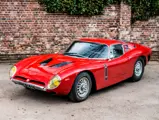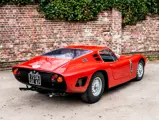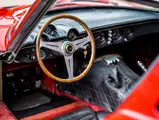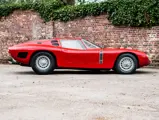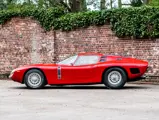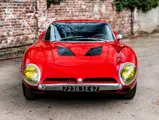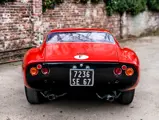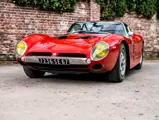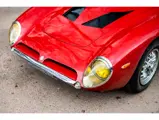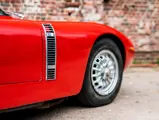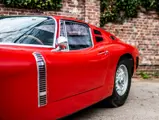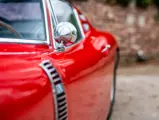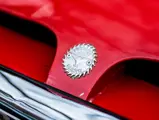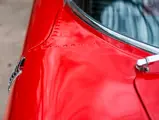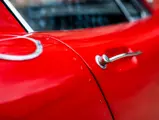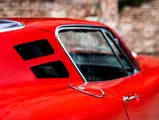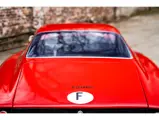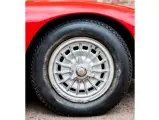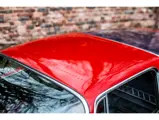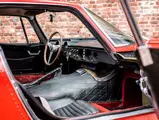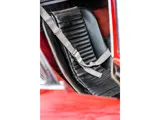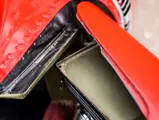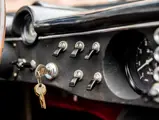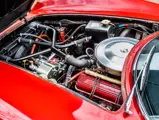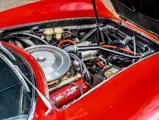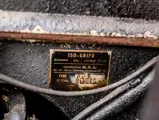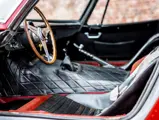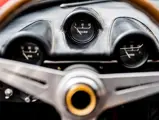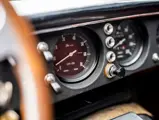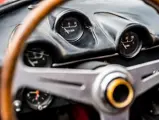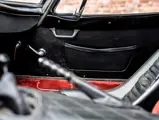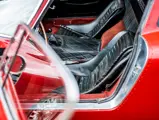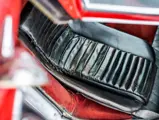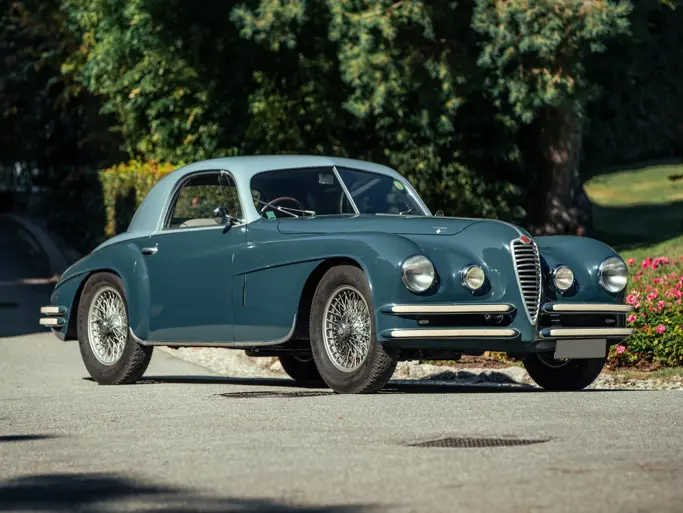Monaco 2022
1965 Iso Grifo A3/C
{{lr.item.text}}
€1,550,000 - €1,750,000 EUR | Not Sold
 | Monte Carlo, Monaco
| Monte Carlo, Monaco
{{internetCurrentBid}}
{{internetTimeLeft}}

- Last A3/C built to Stradale specification with the desirable rear “flat windscreen”
- Construction completed by Piero Drogo’s Sports Cars of Modena in February 1965
- Coveted “riveted” model with aluminium body, the first completed for 1965
- Claimed to have been displayed at the Paris Motor Show
Carving out an acclaimed reputation at some of Italy’s finest automotive brands in the 1950s and 1960s, Giotto Bizzarrini is perhaps best known as the Ferrari engineer responsible for designing the peerless 250 GTO. Leaving Ferrari in a company uprising that would be known as the “night of the long knives”, Bizzarrini joined forces with Count Giovanni Volpi to develop the 250 GT SWB “Breadvan”, arguably the forerunner among other concepts that would shape the A3/C. He later teamed up with the Milanese industrialist and designer of the Isetta microcar, Renzo Rivolta, a keen auto enthusiast who aspired to build a reliable grand tourer. Bizzarrini worked with Iso’s chief technician, Pierluigi Raggi, in developing a sophisticated platform-type chassis for the 2+2 Iso Rivolta, which enjoyed a production run from 1963 to 1970, and deployed a V-8 engine made by Chevrolet sourced to counter potential fears surrounding reliability issues.
Around 1963, Bizzarrini made public his intentions to develop his own car. The Iso Grifo was introduced as a two-seat grand tourer, based on a shortened Rivolta chassis, and two variants of it were revealed when the model broke cover at the 1963 Turin Auto Show. The Grifo A3/L featured on the Bertone stand—with its “L” standing for “Lusso”, or luxury, while the A3/C was geared for competition, with the “C” representing “Corsa”, and that was displayed on the Iso stand. Both Grifo models featured coachwork designed by Giorgetto Giugiaro, and they were built with a combination of sumptuous Italian styling, a race-inspired chassis, and reliable Chevrolet Corvette V-8 power.
Over the next 18 months, Bizzarrini made his version of the Grifo under agreement with Iso. During this period, however, the relationship between Bizzarrini and Rivolta became somewhat frayed, with the former hoping to channel efforts on racing and the latter set on ramping up production numbers for road cars. In the summer of 1965, the two forces split as the long-running disagreement came to a head, and a deal was reached whereby Bizzarrini could continue to build the cars under his own name, paving the way for the Bizzarrini marque to come into being—and by no coincidence, the Bizzarrini 5300 GT Strada was intrinsically linked to the earlier cars.
The Iso Grifo A3/C was a comfortable car for the road, with its easy cruising power combined with stunning looks and a lavish interior, yet its performance characteristics could be interpreted as a car for the racetrack. Indeed, many were campaigned in motorsport thanks to the lightweight aluminium bodywork, fabricated platform chassis, and semi-monocoque body riveted to the frame, all of which contributed to the A3/C’s standing as a true driver’s car. This advanced chassis, combined with near-perfect weight distribution, resulted in outstanding performance and incredible handling. Output of the Chevrolet V-8 engine ranged between 350 and 420 horsepower, providing a claimed top speed of up to 180 mph.
Before the split between Bizzarrini and Iso, it is recorded that 22 cars were built between 1963 and 1965, all of which were made with a riveted aluminium body. Chassis number B0212 was originally sold new as an Iso Grifo A3/C, as one of those 22 cars, and is the first A3/C recorded to have been completed by Iso in 1965. Construction of the car had begun towards the end of the 1964 at Piero Drogo’s Sports Cars bodyshop in Modena, Italy—where selected A3/C models were sent for completion under supervision by Bizzarrini, as an alternative to his own Autostar “Prototipi Bizzarrini” facility in Livorno—before being readied for customer delivery in February 1965. Inexplicably, an Iso A3/C was displayed on the Bertone stand at the 1964 Paris Motor Show in October, and studying the specifications of the flat rear window cars reveals that the car was probably B0212, despite being apparently completed later; a likely scenario was that it was billed as an early-1965 car to make it appear to be younger.
This car features many attributes similar to the A3/C prototype that Iso entered into the 24 Hours of Le Mans in 1964, notably the riveted body and side vents. It is one of the few examples built with a flat rear window, a distinguishing identifier that marks early models and a feature that was phased out shortly after the production of chassis number B0212, in favour of glass that was curved to suit the shape of the car’s rear profile.
Records suggest that this car was built new with an exterior shade of Champagne, which can still be seen within the door panel, while in current configuration the car is finished in an attractive shade of red. A red carpeted interior is complemented by black leather seats and a quilted leather runner for the transmission tunnel—a detail typical of these cars. A previous registration title on file declares that the first owner of this A3/C was Marc Grégorie, an engineer and founder of the French kitchenware brand, Tefal, then residing in the Val-d'Oise region of France. Its first keeper would only keep the car for one year, before it was sold to its next owner, Freddy Zimmer of Strasbourg, France. The Iso Grifo was acquired by Jean-Jacques Fritsch in 1979, then one year later was bought by Marcel Petitjean, the renowned classic car collector from Strasbourg, who kept the car for almost 40 years, selling to the consigning owner in December 2019.
Today, chassis number B0212 offers a blend of originality, rarity and general charm of Italian sports cars produced in low volume in their era. Considering that other examples made alongside this example have been modified, restored, or otherwise lost, this Iso Grifo A3/C presents as a fine opportunity to own a truly significant and sought-after collector car that is seldom seen on the road or at concours events.

